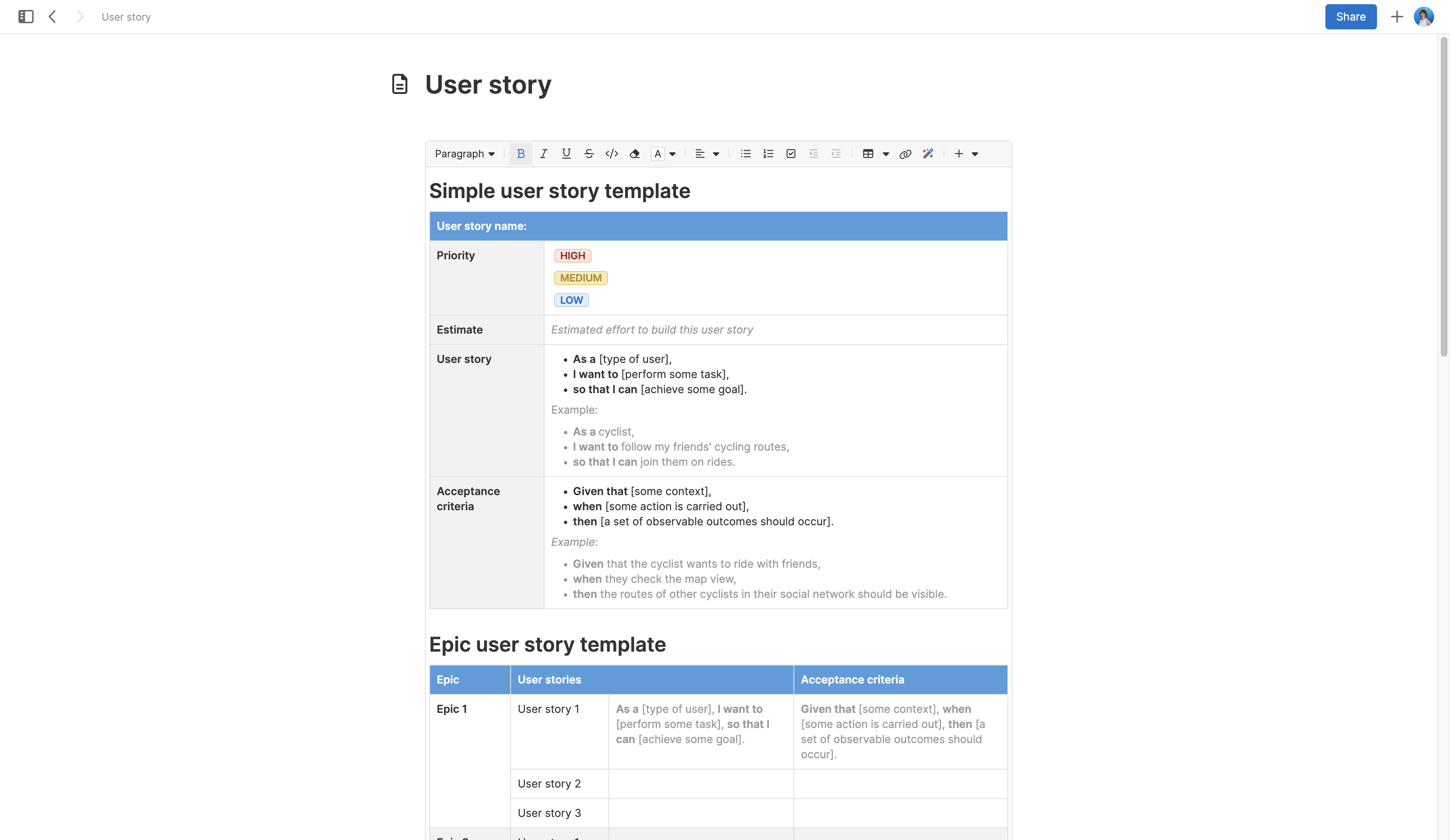User story template
Get right to the heart of why a new feature matters to your customers
Use template
About the user story template
A user story describes a product feature from the perspective of the end user. It is a concise way to convey what the user wants or needs from new functionality — often in one or two sentences.
User stories provide structure and meaning to agile software development work along with themes, epics, and tasks. Because they explain the desired outcome from the user's point of view, user stories help your team clearly understand the value a new feature will provide, rather than focusing only on functionality.
These user story templates provide simple formulas for capturing the "who,” “what,” and “why” behind features. Include acceptance criteria and customize the templates as you see fit. Detailed technical requirements come later.
Best practices
Capture new product functionality from the user's perspective and define your acceptance criteria.
Select your template Each of the four templates offers a slightly different layout based on the level of detail you want to include.
Write user stories The basic template for an agile user story is: "As a [type of user], I want to [perform some task] so that I can [achieve some goal]."
Add acceptance criteria Describe what the functionality must do in order to satisfy the user's goal. The basic template for acceptance criteria is: "Given that [some context], when [some action is carried out], then [a set of observable outcomes should occur]."
Take it to the next level Group user stories into a user story map to help clarify which features will provide the most value to your customers — then prioritize accordingly.